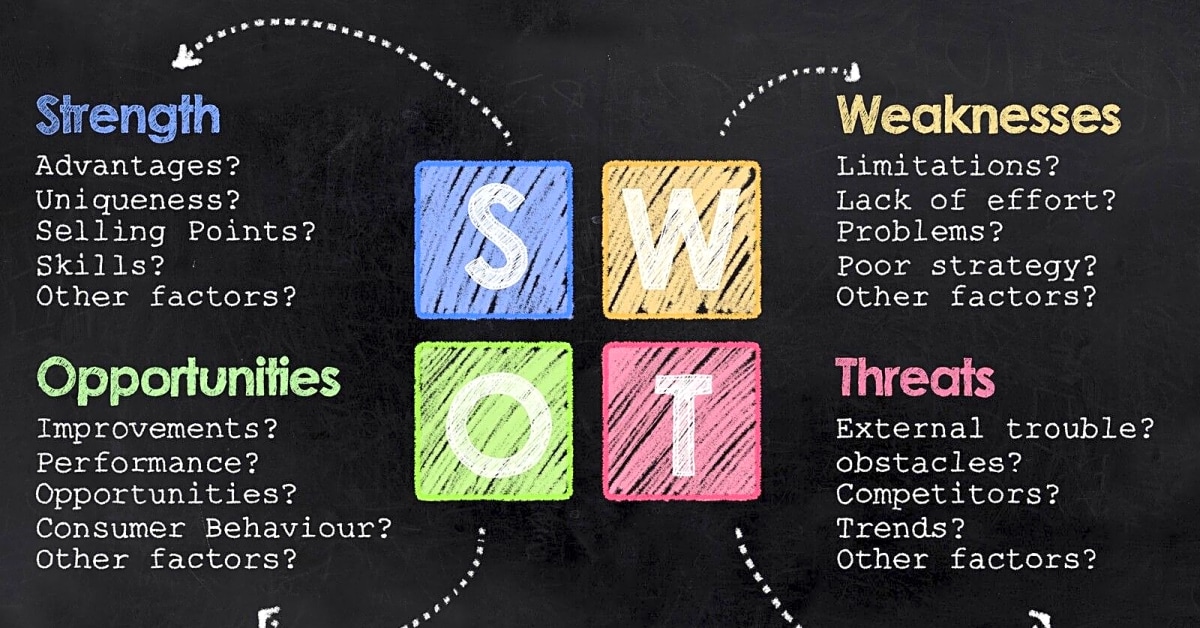A Comprehensive Guide to Developing Action Plans for Strategic Planning and SWOT Analysis
 by Consultant
by Consultant

Strategic planning and SWOT analysis are crucial components of any successful business. They help organizations identify their strengths, weaknesses, opportunities, and threats, and develop effective action plans to achieve their goals. In today’s fast-paced and competitive business world, having a well-developed action plan is essential for staying ahead of the curve. Whether you are a small startup or a large corporation, understanding how to create and implement an action plan is vital for your long-term success. In this comprehensive guide, we will dive deep into the world of strategic planning and SWOT analysis, discussing the key steps and best practices for developing effective action plans. So, if you’re ready to take your business to the next level, keep reading to learn more!
To start off, let’s define what a strategic plan is. A strategic plan is a document that outlines an organization’s direction and goals, as well as the actions needed to achieve those goals. It is a crucial tool for any business looking to stay competitive and achieve long-term success. Now, let’s dive into the steps for developing effective action plans for strategic planning and SWOT analysis.
Firstly, it’s important to conduct a thorough analysis of your organization’s strengths, weaknesses, opportunities, and threats (SWOT). This will help you identify areas where your business can excel and areas that need improvement. Then, you can use this information to determine the goals and objectives of your action plan.
Next, you will need to come up with specific and measurable actions that will help you achieve your goals. These actions should be realistic and aligned with your organization’s capabilities. It may also be helpful to involve key stakeholders in this process to ensure buy-in and commitment to the action plan.
After creating the action plan, it’s essential to regularly review and monitor its progress. This will allow you to make adjustments as needed and ensure that you are on track to achieving your goals. Additionally, it’s crucial to communicate the action plan with your team and ensure everyone understands their roles and responsibilities in its execution.
In conclusion, developing action plans for strategic planning and SWOT analysis is a critical step in improving your business strategy. By following these steps and regularly reviewing and communicating the plan, you can set your organization up for long-term success.
How to Consistently Review and Communicate Your Action Plan
In order to ensure the success of any action plan, it is crucial to regularly review and communicate the plan. This means regularly evaluating the progress made towards achieving the goals outlined in the plan, and communicating any updates or changes to relevant stakeholders.
Regular review and communication allows for any necessary adjustments to be made to the action plan, ensuring that it remains relevant and effective. It also allows for any potential issues or roadblocks to be identified and addressed in a timely manner.
Furthermore, regular communication of the action plan ensures that all team members are on the same page and working towards the same goals. This promotes collaboration and accountability within the team, leading to increased efficiency and productivity.
Overall, regularly reviewing and communicating the action plan is essential for its success. It allows for flexibility and adaptability, promotes teamwork, and ensures that everyone is aligned towards achieving the desired outcomes.
Understanding Strategic Planning and SWOT Analysis
In today’s fast-paced business world, it is more important than ever to have a strong and effective strategic plan. This is where strategic planning and SWOT analysis come into play. These two tools can provide valuable insights and guidance for businesses looking to improve their overall strategy and achieve success.
Strategic planning is the process of defining a company’s direction and making decisions on allocating its resources to pursue this direction. It involves setting goals, analyzing internal and external factors, and creating action plans to achieve those goals. On the other hand, SWOT analysis stands for strengths, weaknesses, opportunities, and threats. It is a framework used to evaluate a company’s internal strengths and weaknesses, as well as external opportunities and threats in the market.
By understanding these two concepts, businesses can gain a clear understanding of their current position and identify areas for improvement. Strategic planning and SWOT analysis can also help businesses stay competitive, adapt to changing market conditions, and make informed decisions for the future.
Steps for Developing Effective Action Plans
Developing action plans is a crucial aspect of strategic planning and SWOT analysis. It involves creating a detailed roadmap that outlines the steps and actions needed to achieve specific goals and objectives. These plans help businesses stay organized and focused, ensuring that all efforts are directed towards achieving success.
Here are the essential steps for creating effective action plans:
1. Identify your organization’s goals and objectives
The first step in developing an action plan is to clearly define your organization’s goals and objectives. These should be specific, measurable, achievable, relevant, and time-bound (SMART). By having a clear understanding of what you want to achieve, you can create action plans that align with these goals and drive your business towards success.
2. Assess your organization’s capabilities
Next, it is important to assess your organization’s strengths and weaknesses. This will help you identify areas where you have a competitive advantage and areas where you need to improve. Understanding your capabilities will also help you determine which action plans are feasible and which may require more resources or time.
3. Conduct a SWOT analysis
A SWOT analysis is a useful tool for identifying your organization’s strengths, weaknesses, opportunities, and threats. It can provide valuable insights into how your business can capitalize on its strengths and mitigate its weaknesses. This analysis will also help you identify potential risks and challenges that may affect the success of your action plans.
4. Set priorities and timelines
Based on your goals, capabilities, and SWOT analysis, you can now prioritize which actions are most important and set realistic timelines for their completion. This will help you stay on track and ensure that your efforts are focused on the most crucial tasks.
5. Assign responsibilities
To ensure that your action plans are effectively executed, it is important to assign responsibilities to specific individuals or teams. This will help create accountability and ensure that everyone knows their role in achieving the organization’s goals.
6. Monitor and review progress
Regularly monitoring and reviewing the progress of your action plans is crucial to their success. This will allow you to make any necessary adjustments or changes to ensure that you are on track to achieving your goals.
Conclusion
Developing effective action plans is a key step in strategic planning and SWOT analysis. By following these essential steps, you can create action plans that align with your organization’s goals and capabilities, setting your business up for success.
Developing action plans for strategic planning and SWOT analysis is a continuous process that requires regular review and communication. By following these steps, you can improve your business strategy and set your organization up for long-term success.
Related Posts
Learn how to develop action plans for strategic planning and SWOT analysis to improve your business strategy.